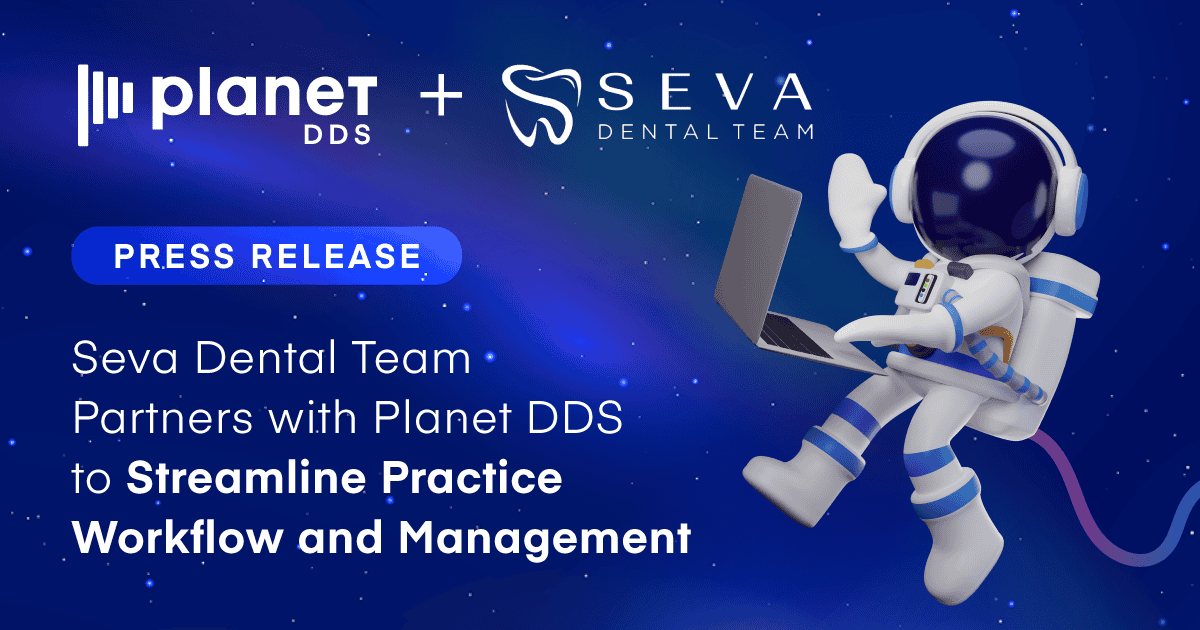How to Build a High-Performance Team for Your Practice: A Complete Guide

An organization is only as strong as the team members that make up that organization. But just like a sports team, having the best players isn’t enough. There needs to be protocols and systems in place that allow those talented players to achieve their true potential.
This happens through thoughtful leadership with a purpose. It’s also the result of implementing best practices and continuous improvement that facilitate personal and organizational growth.
A dental practice contains various team members, and each one is critical to the overall performance of your business. In many offices, tasks are specific to one team member, so each person must be the best at what they do. But also, each skill set must complement those of the other team members to achieve the best performance from everyone.
In this article, we’ll look at how to build a high-performance team for your dental practice. We’ll also look at the best practices for managing your high-performance teams and keeping them motivated and performing to the best of their ability.
The Importance of Developing High-Performance Teams
A high-performance team will make daily operations run smoother, which is always critical. But they have other advantages that are more important to core business goals.
Any business faces challenges and needs to adapt to them. Whether it’s economic headwinds or changing technology, practices must adapt quickly to navigate these obstacles and turn them into opportunities.
Creating high-performance teams is critical for this, as they can quickly adapt to new environments or workflows. A team with sub-par performance will often lag in these key areas and instead want to maintain its current course of action. This leads to declining revenue for the business as it loses market share to other more agile competitors.
With a dental practice, it’s no different. Patients have different demands regarding how they manage their accounts or appointments in today’s environment. Practices need teams that can adjust to those new market demands.
Insurance claims can also be more complicated today, and workflows need to be in place that addresses this so that billing and patient records are handled efficiently. The last thing you want is a delay in receiving reimbursements which can lead to cash flow issues.
These changes require new workflows and a team that can learn and quickly adopt them while always looking to improve.
All of this means better client retention, lower costs and waste, and increased revenue and margins. These are signs of a healthy and growing practice, and it often starts with a high-performance team.
Characteristics of a High-Performance Team
Now that we understand the benefits of a high-performance team and how it can improve dental practices, it’s also essential to know the characteristics of high-performance teams and model them effectively.
High Skill Levels That are Also Complementary
The hallmark of a high-performance team is often found in the skills of the team members. But just as important as individual skills, these unique skill sets must complement other team members to create a strong synergy.
Having five team members with the same skill set may not be ideal if you are trying to build a high-performing team. Instead, each member having different skills that complement the other will build a stronger and more agile team that can tackle problems.
Dedication to the Team
Similar to being complementary to each other regarding skill sets, team members must also be committed to a “team first” attitude. Whatever the goals are, that is the primary driver of action.
Sometimes that means putting aside individual goals or directions and instead focusing on what’s best to achieve the organization’s overall goals.
Results Oriented
Regardless of what actions are taken, there must be a commitment to measurable metrics being the goal of improvements. If you want to build high-performing teams, results matter.
On top of metrics, there must also be an overall strategy in place that gives the team something to strive for. This combination of measurable metrics and constant improvement helps drive excellence.
Responsibility
This means accepting both success and failure. A high-performance team doesn’t begin to point fingers when goals or metrics are not met. Instead, they reexamine their strategy and look to improve based on the current results.
The same can be said for successes. They are shared as a team, and the individuals each contribute their unique skills to help the team succeed.
This thinking also helps promote adaptability, as a team that points fingers or makes excuses is often unable to adapt.
In the next section, we’ll look at how to build a high-performing team for your practice.
How to Build a High-Performance Team
Now it’s time to start building a high-performance team of superstars. It can seem complicated, given the characteristics of a high-performance team outlined earlier.
But high-performance team building is possible with a few essential guidelines and should be possible for almost any organization, regardless of size.
Trust is Key
Everyone in your office must trust each other’s skill sets. They must also trust that leadership has the best interests of both the team and the practice in mind.
Without this type of trust, it can be difficult to get team members to take initiative and work together towards a common goal. A loss of trust will generally lead to team members each looking out for themselves. This means missed goals are often blamed on others, causing others to shy away from suggesting improvements.
If trust has deteriorated in your team, it may be time to refocus everyone and deal with those issues to get things back on track.
Communication
Every team member must feel comfortable voicing their thoughts or opinions on current goals. For example, if an employee in the office feels there is some inefficiency with how patient records are being handled, they should feel comfortable bringing attention to that issue.
If team members are anxious or unwilling to make suggestions, workflows will not improve. In turn, the office will quickly stagnate and become more inefficient over time.
Communications aren’t always about suggestions or improvements. They are related to everyday tasks as well.
Make sure team members know exactly where to turn with questions or other issues. Also, periodic team meetings to help refocus everyone are helpful and a perfect way to bring everyone back on the same page.
Access to Training and Materials
You can’t expect your team to know everything, especially when things change quickly, such as with new technology in the office.
Make sure your team has access to training materials if needed to deal with any changes or initiatives that are set in place.
For example, if new billing software is introduced at the office, the team needs access to the proper training or, at the very least, the materials required for training.
Often, a dental practice will bring in new software, then assign one person to learn it independently. That person is then responsible for teaching it to others in the office.
This is not the best way and often puts too much strain on one team member. Instead, reach out to the new software vendor and ask what training materials are available.
Then, set aside time for each team member who will be using the new software to access the training.
This can be applied to any recent changes in the office, from new administration tools to new medical equipment.
Set SMART Goals
As outlined earlier, a high-performance team needs to be focused on measurable results.
A way to look at setting up these goals and metrics is to use a system known as SMART goals. The acronym SMART stands for the following:
Specific
Measurable
Actionable
Relevant
Time Bound
Using these criteria for the goals and metrics set out for a team makes it easier to decide how to measure the success of each initiative.
It also helps to provide clear goals for the team. By setting specific and measurable goals, team members know exactly what their role is and how they can contribute.
This is far more helpful than more general goals like “increase patient retention.” Goals like that need to be broken down into smaller, specific tasks that team members can address.
For example, what issues are causing patients to leave, and how can that be addressed? If it’s scheduling issues, the team must work on ways to improve patient scheduling options.
The team can set up a goal of introducing one new scheduling option for patients within a 2-week time frame. This may include a period of researching new scheduling options. Then have a meeting to decide which option will address the most issues your office is dealing with.
These very specific goals, each with a clearly defined time frame, are much easier to achieve and take action on.
Setting up SMART goals helps everyone in the office more easily work towards specific tasks, which improves the overall business. It also helps keep team members motivated as their work is always rewarded as they accomplish new goals and move on to new tasks.
Automate Repetitive Work
Nothing saps the energy from a team like repetitive tasks that take up a majority of their schedule. This drains resources and makes an office inefficient.
Look where automation can play a role in your dental practice and look for ways to implement it.
This can be as simple as using a new administration software like Cloud 9, which automatically deals with patient reminders and texting. Freeing your staff from tasks like this opens up opportunities for them to work on more growth-oriented tasks to help the office improve and expand.
Choose a Team Leader
A great team needs a team leader. It can be yourself or someone you designate. Whoever it is, they must be someone who inspires people instead of just driving them.
This means a leader must be open to various ideas and goals. They must also be someone who will effectively communicate with team members.
Additionally, an ideal team leader must be skilled at conflict resolution. Nothing can harm a team more than conflicts that develop over time. A strong leader must be unbiased, find ways to diffuse these issues and get the team back on track.
Using the building blocks outlined above should make it easier when it comes to developing high-performance teams for your business or organization.
This role requires a certain degree of maturity, personally and professionally. It can be difficult, but it helps build trust when the team recognizes the leader is both objective and even-handed.
For most dental practices, you likely already have a manager who is essentially the team leader. Make sure they are both comfortable with this position and understand what is expected of them now that you want to transform your staff into a high-performance team.
Help with Building Your High-Performance Team
We’ve seen the importance of high-performance teams and how they can help a dental practice improve operations and increase revenue. But a great team also needs great tools to work efficiently.
At Cloud 9, our orthodontic and dental practice software does just that. By helping to automate repetitive tasks along with streamlined workflows for patient records and billing, our software takes your team to the next level. With Cloud 9’s recent acquisition of ToothFairy, now known as Cloud Ignite, a revolutionary software solution for orthodontic and dental practices, you will have even more tools to empower your team!
Contact Cloud 9 for a free demo of our solution. Our industry-leading software is designed to help dental offices around the country transform their staff into high-performance teams. Get the tools you need to succeed!



